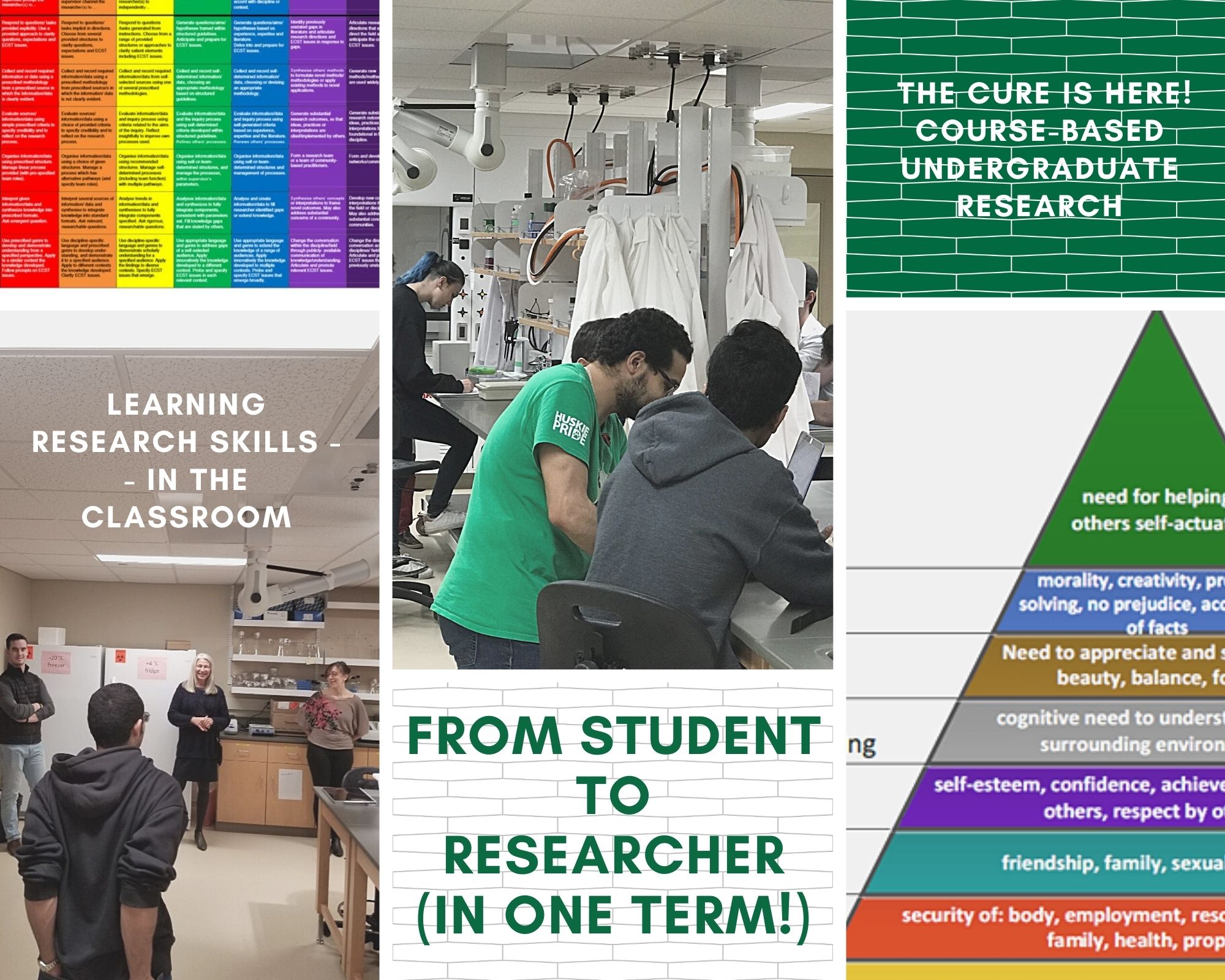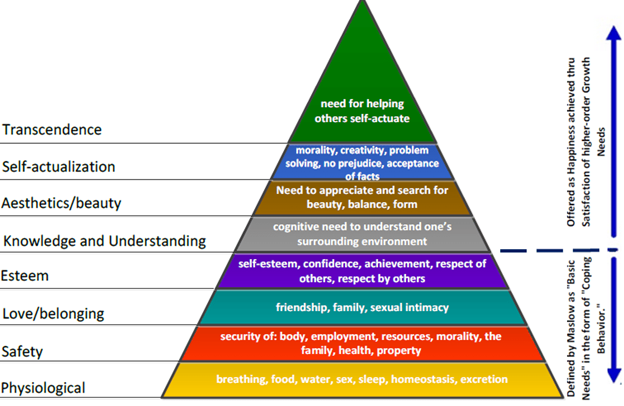
From Student to Researcher (in one Term!) Post 8: And why is the CURE format so fulfilling for instructors?
In post 7 we explored why we think the CURE course is fulfilling for learners. In this post we argue that is is an extremely satisfying professional experience for instructors.
By Harold Bull, Dawn Giesbrecht, and Sheryl Mills(This blog series is authored by USask denizens Harold Bull, Dawn Giesbrecht and Sheryl Mills) Harold is Assistant Professor Biochemistry, Microbiology & Immunology. Dawn is Laboratory Instructor Anatomy, Physiology and Pharmacology; Biochemistry, Microbiology and Immunology. Sheryl is Associate Director, Academic Programs & Interprofessional Education)
In post 7 we explored why we think the CURE course is fulfilling for learners. We admit that we have a smug sense of self-satisfaction and fulfillment. Harold has made the point that scholars (as a rule) don’t publish negative data. We are no different. The important part though, all joking aside, is that this is an extremely valuable experience for learners, and an extremely satisfying professional experience for us as instructors. That is why we did this more than once! And we believe it is reproducible, generalizable and can be validated in your independent trials.
In this post we address “How does this happen?” Is it Magic? Special powers? Serendipity? Forces of Nature? A surprisingly keen group of learners? Extremely talented instructors? Some of these may be true. 😉 Here we explore the magic of those ‘extremely talented instructors’. As we did our reflections for this episode, we realized this is not magic – it’s SCIENCE, DAMN IT!
We will use this expanded version of Maslow’s Hierarchy of Needs for this reflection and discussion (picture wispy clouds and couple of sure footed mountain goats near the peak of transcendence...[1]).

Let’s do a quick run-through aligning the hierarchy to the instructors’ CURE experiences:
- Basic Needs:
- Our ‘Basic Needs’ from the ‘Safety and Physiological’ categories are pretty much covered by being employed and having the freedom to try the CURE approach. We were secure in knowing we could try this approach with virtually no professional risk. We also had the freedom to develop the course architecture for this evidence-based teaching approach. The small team environment is a ‘safe’ zone of inquiry.
- Regarding the ‘Belonging and Esteem’ categories, in a CURE course there feels like there is a real sense of community. We chose our team and we also chose to use the CURE approach. There is mutual respect inherent in this learner-directed, research-focused teaching approach which evolves into working together as respected equals (see earlier episodes for more information).
- Growth Needs:
- Knowledge and understanding. Some examples are:
- Clear understanding of the benefits of the CURE architecture. Research process/arc is second nature, and valued and enjoyed
- Comfortable being an instructor and having learners engaged in team-driven projects
- Instructor team worked together for years, and so designing the CURE course together was quite natural and easy…and a little scary!
- Aesthetics and beauty—are in the eye of the beholder. Here are some examples:
- Appreciation for the creation of an elegant well-crafted research question/hypothesis and of the alignment of research approaches that best address the research questions
- Coaching learners to create their hypotheses and methodologies
- Supporting teamwork and collaboration
- The glow of achievement from engaged researchers sharing their findings. CAVEAT—you have to ‘not need’ the spotlight yourself as the instructor, but be comfortable and happy to have the spotlight shine on your learners. You can still bask in their glow!
- Self-actualization. Examples include:
- Creativity is required for thinking-on-one’s-feet, to solve problems that arise while coaching teams engaged in diverse, unique projects and processes
- Investment is in the process, not in each project’s outcome. The research is the learner’s research and this eliminates pre-judging or prejudice
- Learners, instructors, and invited guests report alignment about the efficacy of the CURE approach (triangulation for validation in qualitative research—observations become facts that are accepted)
- We feel that providing the very best learning opportunity is a moral obligation. When you know a learning approach is beneficial to learners, like this research opportunity, is it not immoral to withhold such an opportunity?[2]
- Transcendence
- The CURE architecture deliberately supports self-actualization of our learners and, in that way, we, as instructors, experience ‘transcendence’.
So…why we did this more than once…Basic needs are met, growth needs are met, and, basically, even with our first iteration of running a CURE, even when we really didn’t know what we were doing, we saw our learners transition from students to researchers almost immediately, right before our eyes. This is extremely positively reinforcing! Overwhelmingly, the learner feedback indicates how much they value the experience[3], and accomplish way more than anyone’s highest expectations going in. The success of the learners also helped reinforce our investment in the CURE approach.
And, bonus, here are some of the things we no longer have to do:
- Pull the learners along—they pull us!
- Motivate ‘students’—the original research motivates us all
- Add pressure—learner-generated pressure cooker experience 😉
- Concern ourselves with cheating—there are no shortcuts available, so we don’t need a ‘police state’ on high alert for infractions[4]
- Examine submitted ‘work’ solely for marking purposes—we provided feedback in a manner similar to a graduate supervisory committee. The focus is on the research, process, teamwork, and the end result
- Sift through crappy course reviews looking for something even a little bit of positive
One of the most surprising aspects was that we did not have to referee team drama—at all! Stay tuned for future posts when we explore why we think there is virtually no drama in a team-based CURE!
Find ALL BLOG POSTS IN THIS SERIES HERE. Find the previous post here. Find post nine here.
Podcasts:
[1] We toyed with the possibility of inserting more graphics 🐐🐐☁…but alas, it would take too many keystrokes and too much time and would take away this valuable opportunity for you to use your imagination. You are welcome!
[2] Research opportunities at the undergraduate level are often only provided to honours-level students and at that, only in the last year of their studies.
[3] See Episode 3 for unedited learner feedback that blew us away!
[4] There is no trust if you are watching for cheating all the time. A police state is not a collaborative environment.

